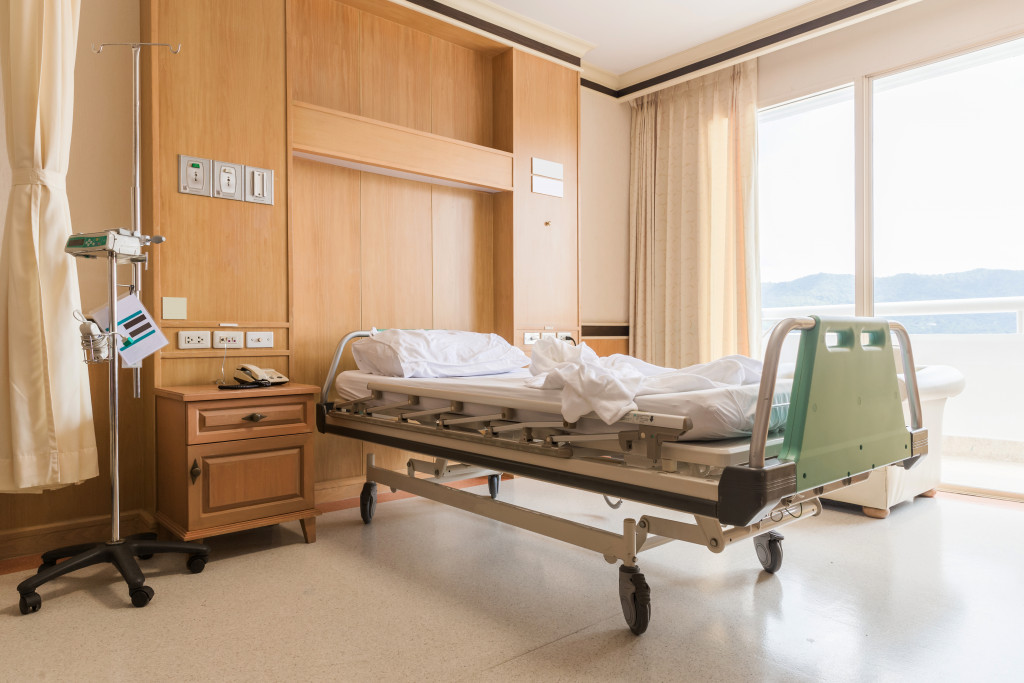As a property or facility manager, you know it’s crucial to balance building compliance, function, and aesthetics. No one wants a building that’s only compliant and functional — it also needs to be visually appealing! Thankfully, there are products today that can help you achieve all three of these goals. This article will explore some of the best products out there and discuss how they can benefit your property or facility.
Wide Choices for Custom Fire Doors
Fire doors are an essential part of any building’s safety system. Their primary function is to prevent the spread of fire and smoke from one part of the building to another. They also help protect against heat and radiation. Fire doors must withstand a lot of heat and flames, so they are usually made from thick, durable materials like steel or metal.
Nowadays, other materials can be treated to provide the same safety features as thick metal. This even includes glass. Designers can choose materials that match, complement, or enhance design aesthetics.
Previously, designers were limited to the size of products available from manufacturers. They have to close off an area with a wall that includes a conventional fire-rated door.
Now, certain manufacturers can customize the materials used and the size and shape of fire-rated doors according to the designer’s needs. For instance, it is possible to incorporate a fire-rated door in a wide-span glass wall. Spaces can, therefore, look open.
Also, custom fire-rated doors are no longer limited to the conventional swing-type opening and closing. Customized versions can be side-sliding, side coiling, side acting, or vertically acting. They can also cover curved spaces.
Easy-to-Clean, Robust, and Ergonomic Hospital Furniture
Hospitals are sources of healthcare-associated infections (HAIs). The Centers for Disease Control and Prevention (CDC) states that contact with surfaces, especially by the hands, is the primary means of transferring microorganisms to people.
All hospital surfaces must, therefore, be cleaned thoroughly and frequently. Furniture has a lot of high-touch points and is among such surfaces. They must, therefore, be made of materials that can be easily cleaned and can stand up to vigorous and frequent cleaning.
Porous materials can absorb bodily fluids, so they cannot be used. Both material and design must eliminate crevices and seams that are hard to reach for cleaning. Liquids can also pool in such gaps.
The furniture materials that can meet these requirements are powder-coated steel, polymer, and chloride-free polyvinyl. For upholstery, vinyl and woven nylon qualify.
Hospital furniture design must be ergonomic for the comfort of both patients and health care professionals. Current designs accommodate a wider range of body sizes, types, and mobility limitations. The best designs adjust to each user to provide optimal support.
In addition to those requirements, hospital furniture must meet budgets that are often tight. Finally, they must look good and match the hospital’s aesthetics. These days, hospitals are no longer drab. Instead, they are professionally designed to look pleasing and enhance the patients’ experience.

Hospital Flooring Options
Hospital floors nowadays are also part of aesthetic design. One of the trends is toward calming colors and designs that mimic elements of nature. Abstracts in light colors and warm tones are also in demand. Glossy flooring is out. Instead, surfaces with low glare are preferred for eye fatigue reduction.
While meeting design needs, hospital flooring must primarily be easy to clean for infection control. Patient turnover in hospital rooms often leaves the cleaning crew only a few minutes to do a thorough job. The focus is on sanitation so flooring must not require polishing to look good.
That also means seamless floors are preferable because dirt and microorganisms can stay in the seams. In addition, flooring must be durable enough to withstand frequent cleaning while staying clean between cleanings.
One of the most important safety features needed in hospital flooring is to be slip-proof.
For hospital professionals who are on their feet all the time, flooring must be resilient to provide underfoot comfort. Such resilience also provides the added benefit of better acoustics, deadening sound to reduce noise. A quiet environment is necessary for recovery and healing.
Finally, certain parts of hospitals have particular flooring needs. For instance, in rooms that have magnetic resonance imaging (MRI) machines, floors must dissipate static.
Hospital Lighting Options
LED lights are the standard in most hospitals today because of their energy efficiency and long life that meets budgetary requirements. They are easy to control and do not produce much heat. They now also have a wider light-projecting range.
In addition, LED lights now have various functionalities. For instance, some LED lights that are best for ambient lighting, providing a soothing environment. There are also lights meant for examination rooms. These render colors and textures accurately for the most precise diagnosis. In surgical areas, LED lights are sealed to prevent the accumulation of dirt and bacteria.
Hospitals use lights that are flicker-free or have the lowest possible flicker. That is because flicker can trigger seizures in patients with seizure disorders such as epilepsy. This is especially needed in areas that have high risks for falls, like stairwells.
Innovation in LED lights allows users to adjust the color temperature to trigger the necessary circadian rhythm. For instance, the light can induce sleepiness when it is time for bed. On the other hand, it can enhance alertness during the day.
Achieving Compliance, Function, and Aesthetics
Buildings and hospitals can now achieve the perfect balance of safety compliance, a wide range of functions, and aesthetics. Thanks to modern technology, there are now more options to choose from. With all these choices available, you can find the perfect balance for your business.

